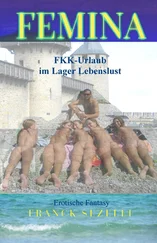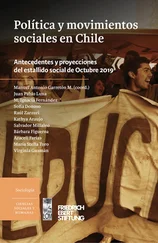Galef Jr, BG, Giraldeau LA (2001). Social influences on foraging in vertebrates: causal mechanisms and adaptive functions. Animal Behaviour 61:3-15.
Galende G (1998). El chinchillón patagónico. Fauna andino patagónica: aportes para su conocimiento. Sociedad Naturalista Andino Patagónica, Serie Técnica (Argentina) 2:1-32.
Galende GI, Raffaele E (2019). Summer behavior and diurnal activity of mountain vizcachas ( Lagidium viscacia ) in two colonies of northwestern Patagonia. Mammal Research 64:271-278.
Galimberti F, Boitani L, Marzetti I (2000a). Female strategies of harassment reduction in southern elephant seals. Ethology, Ecology & Evolution 12:367-388.
Galimberti F, Boitani L, Marzetti I (2000b). The frequency and costs of harassment in southern elephant seals. Ethology, Ecology & Evolution 12:345-365.
Gantz A, Schlatter R, Yáñez M (2011). Influencia del tamaño de la bandada sobre el comportamiento de alimentación y vigilancia en bandurria ( Theristicus melanopis Gmelin 1789). Boletín Chileno de Ornitología 17:92-102.
Garay G, Ortega IM, Guineo O (2016). Social ecology of the huemul at Torres del Paine National Park, Chile. Anales del Instituto de la Patagonia 44:25-38.
Gardner MG, Pearson SK, Johnston GR, Schwarz MP (2016). Group living in squamate reptiles: a review of evidence for stable aggregations. Biological Reviews 91:925-936.
Gatto A, Yorio P, Doldan MS, Gomila LV (2019). Spatial and temporal foraging movement patterns in Royal terns ( Thalasseus maximus ) and Cayenne terns ( Thalasseus sandvicensis eurygnathus ) in northern Patagonia, Argentina. Waterbirds 42:217-224.
Gazda SK, Connor RC, Edgar RK, Cox F (2005). A division of labour with role specialization in group-hunting bottlenose dolphins ( Tursiops truncatus ) off Cedar Key, Florida. Proceedings of the Royal Society of London B: Biological Sciences 272:135-140.
Gebauer P, Freire M, Barria A, Paschke K (2011). Effect of conspecifics density on the settlement of Petrolisthes laevigatus (Decapoda: Porcellanidae). Journal of the Marine Biological Association of the United Kingdom 91:1453-1458.
Geffen E, Gompper ME, Gittleman JL, Luh HK, MacDonald DW, Wayne RK (1996). Size, life-history traits, and social organization in the Canidae: a reevaluation. The American Naturalist 147:140-160.
Gerhardt HC (1994). The evolution of vocalization in frogs and toads. Annual Review of Ecology and Systematics 25:293-324.
Gero S, Engelhaupt D, Whitehead H (2008). Heterogeneous social associations within a sperm whale, Physeter macrocephalus , unit reflect pairwise relatedness. Behavioral Ecology and Sociobiology 63:143-151.
Gero S, Engelhaupt D, Rendell L, Whitehead H (2009). Who cares? Between-group variation in alloparental caregiving in sperm whales. Behavioral Ecology 20:838-843.
Gero S, Gordon J, Whitehead H (2013). Calves as social hubs: dynamics of the social network within sperm whale units. Proceedings of the Royal Society of London B: Biological Sciences 280:20131113.
Gero S, Bøttcher A, Whitehead H, Madsen PT (2016). Socially segregated, sympatric sperm whale clans in the Atlantic Ocean. Royal Society Open Science 3:160061.
Gompper ME, Gittleman JL, Wayne RK (1997). Genetic relatedness, coalitions and social behaviour of white-nosed coatis, Nasua narica . Animal Behaviour 53:781-797.
Goodwin SE, Podos J (2014). Team of rivals: alliance formation in territorial songbirds is predicted by vocal signal structure. Biology Letters 10:20131083.
Grant MC (1991). Nesting densities, productivity and survival of breeding whimbrel Numenius phaeopus in Shetland. Bird Study 38:160-169.
Greene E (1987). Individuals in an osprey colony discriminate between high and low quality information. Nature 329:239-241.
Greenfield MD (1994). Cooperation and conflict in the evolution of signal interactions. Annual Review of Ecology and Systematics 25:97-126.
Greenfield MD (2005). Mechanisms and evolution of communal sexual displays in arthropods and anurans. Advances in the Study of Behavior 35:1-62.
Griffin AS, West SA (2002). Kin selection: fact and fiction. Trends in Ecology & Evolution 17:15-21.
Griffin AS, West SA, Buckling A (2004). Cooperation and competition in pathogenic bacteria. Nature 430:1024-1027.
Guichón ML, Borgnia M, Righi CF, Cassini GH, Cassini MH (2003). Social behavior and group formation in the coypu ( Myocastor coypus ) in the Argentinean pampas. Journal of Mammalogy 84:254-262.
Gutiérrez JS, Soriano-Redondo A (2018). Wilson’s phalaropes can double their feeding rate by associating with Chilean flamingos. Ardea 106:131-138.
Gutiérrez M, Swartzman G, Bertrand A, Bertrand S (2007). Anchovy ( Engraulis ringens ) and sardine ( Sardinops sagax ) spatial dynamics and aggregation patterns in the Humboldt Current ecosystem, Peru, from 1983-2003. Fisheries Oceanography 16:155-168.
Guzmán M (1978). Patrón de distribución espacial y densidad de Nacella magellanica (Gmelin, 1971) en el intermareal del sector oriental del Estrecho de Magallanes. Anales del Instituto de la Patagonia (Chile) 9:205-219.
Gygax L (2002a). Evolution of group size in the dolphins and porpoises: interspecific consistency of intraspecific patterns. Behavioral Ecology 13:583-590.
Gygax L (2002b). Evolution of group size in the superfamily Delphinoidea (Delphinidae, Phocoenidae and Monodontidae): a quantitative comparative analysis. Mammal Review 32:295-314.
Habit E, Ortiz JC (1996). Patrones de comportamiento y organización social de Phymaturus flagellifer (Reptilia, Tropiduridae). Herpetología Neotropical, Actas del II Congreso Latinoamericano de Herpetología , volumen II, pp. 141-154.
Hamasaki K, Troncoso-Palacios J (2011). Nueva localidad para el lagarto leopardo ( Liolaemus leopardinus ) y comentarios sobre su distribución. La Chiricoca 12:13-17.
Hamilton WD (1964). The genetical theory of social behavior I and II. Journal of Theoretical Biology 7:1-52.
Hamner WD, Parrish JK (1997). Is the sum of the parts equal to the whole: the conflict between individuality and group membership. Pp. 165-173, en: Animal groups in three dimensions (Parrish JK, Hamner WM, eds.). Cambridge University Press, Cambridge, Reino Unido.
Hall ML, Peters A (2008). Coordination between the sexes for territorial defence in a duetting fairy-wren. Animal Behaviour 76:65-73.
Haller J, Harold G, Sandi C, Neumann ID (2014). Effects of adverse early life events on aggression and anti social behaviours in animals and humans. Journal of Neuroendocrinology 26:724-738.
Harcourt AH, De Waal FBM (1992). Coalitions and alliances in humans and other animals . Oxford University Press, Oxford, Reino Unido.
Harel R, Spiegel O, GetzWM, Nathan R (2017). Social foraging and individual consistency in following behaviour: testing the information centre hypothesis in free-ranging vultures. Proceedings of the Royal Society B: Biological Sciences 284:20162654.
Hartbauer M, Haitzinger L, Kainz M, Römer H (2014). Competition and cooperation in a synchronous bushcricket chorus. Royal Society Open Science 1:140167.
Hartman KL, Visser F, Hendriks AJ (2008). Social structure of Risso’s dolphins ( Grampus griseus ) at the Azores: a stratified community based on highly associated social units. Canadian Journal of Zoology 86:294-306.
Читать дальше












